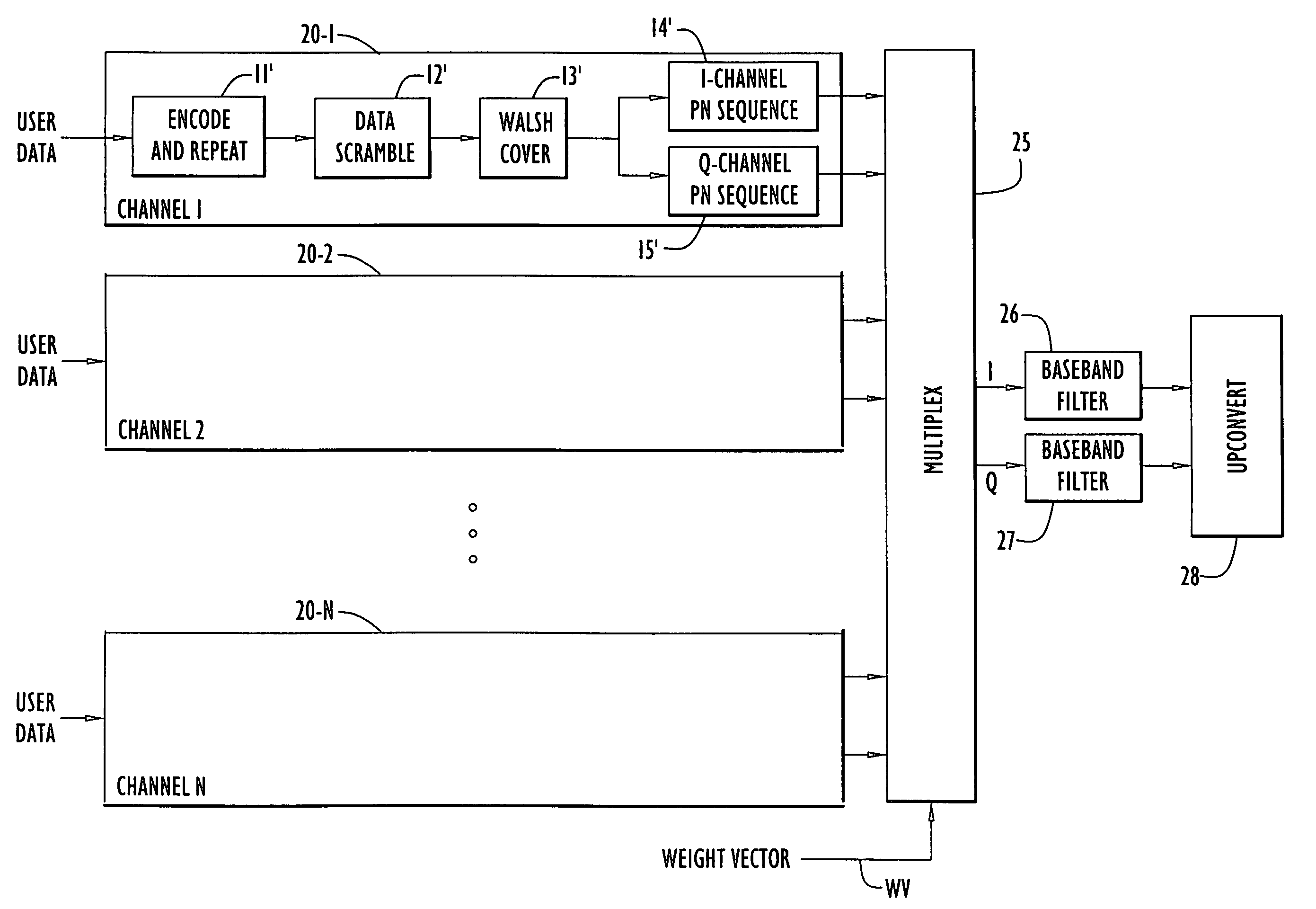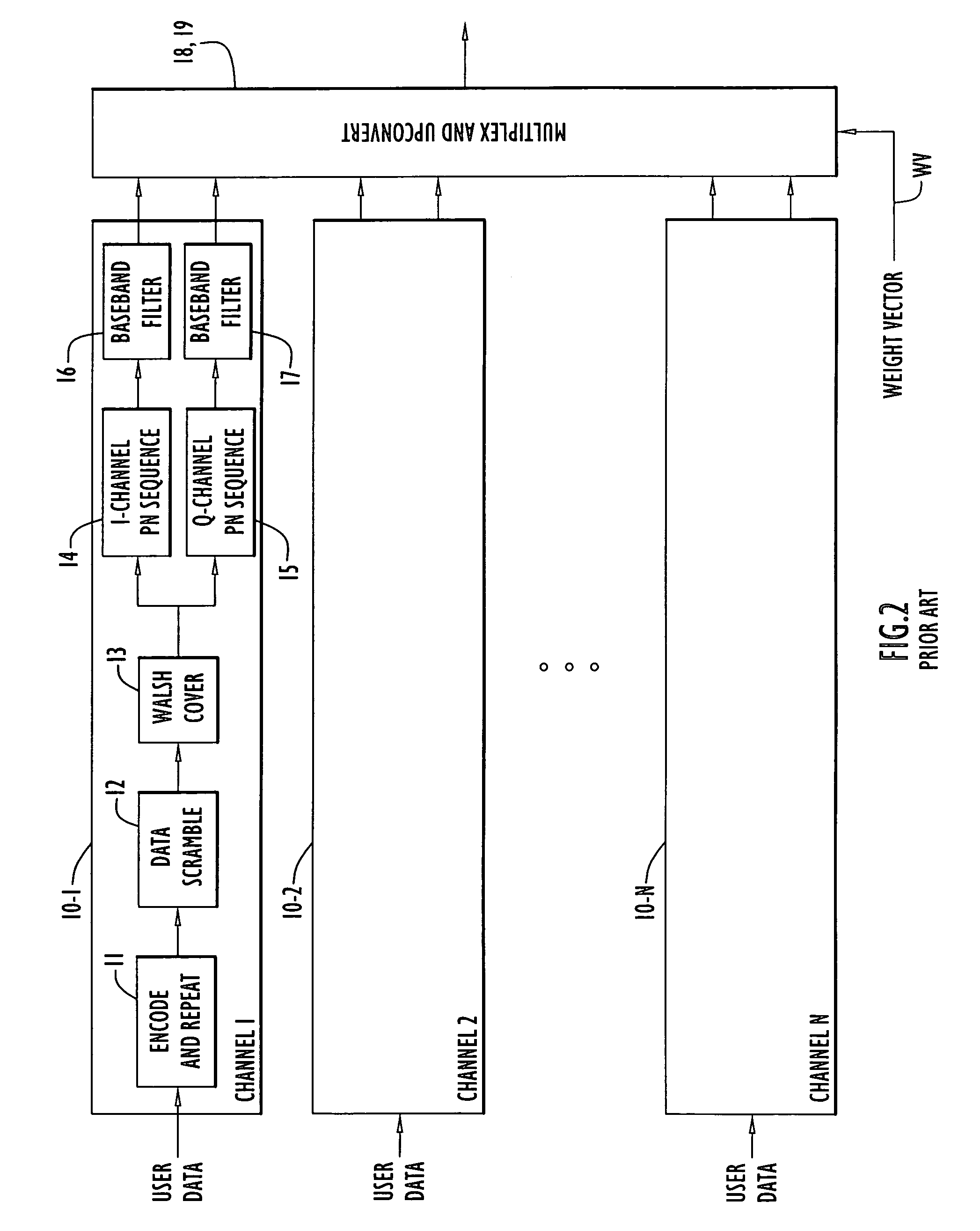Chip-synchronous CDMA multiplexer and method resulting in constant envelope signals
a cdma multiplexer and constant envelope technology, applied in the field of wired and wireless communication systems, can solve the problems of inability to correct long fades, inability to use reverse link capacity most beneficially, and limited extent to which any of these remedies can succeed, so as to increase the overall effective power utilization, and minimize the loss of effective power
- Summary
- Abstract
- Description
- Claims
- Application Information
AI Technical Summary
Benefits of technology
Problems solved by technology
Method used
Image
Examples
Embodiment Construction
[0029]Referring to FIG. 3, user data processing is the same through development of I and Q sequences as in the prior art (FIG. 2), and the same numerals are used with a prime mark. Both the digital streams and a power weight vector WV′ are presented to the multiplexer 25, which outputs I and Q sequences that are then bandpass filtered 26, 27 and upconverted 28 to form the QPSK sequence at RF. It is therefore desirable to provide systems and methods that enable chip-synchronous CDMA signals to multiplexed into a constant-envelope signal.
[0030]With reference to FIG. 4, a general CDMA communication system incorporating the principles of the invention includes a transmitting station TS and multiple receivers R1, R2, R3 . . . RN separated by a communication channel, represented in FIG. 4 as a noise source.
[0031]According to the invention, the transmitter forms and transmits a constant-envelope, direct sequence (DS) spread spectrum signal having a waveform in which are encoded multiple us...
PUM
 Login to View More
Login to View More Abstract
Description
Claims
Application Information
 Login to View More
Login to View More - R&D
- Intellectual Property
- Life Sciences
- Materials
- Tech Scout
- Unparalleled Data Quality
- Higher Quality Content
- 60% Fewer Hallucinations
Browse by: Latest US Patents, China's latest patents, Technical Efficacy Thesaurus, Application Domain, Technology Topic, Popular Technical Reports.
© 2025 PatSnap. All rights reserved.Legal|Privacy policy|Modern Slavery Act Transparency Statement|Sitemap|About US| Contact US: help@patsnap.com



